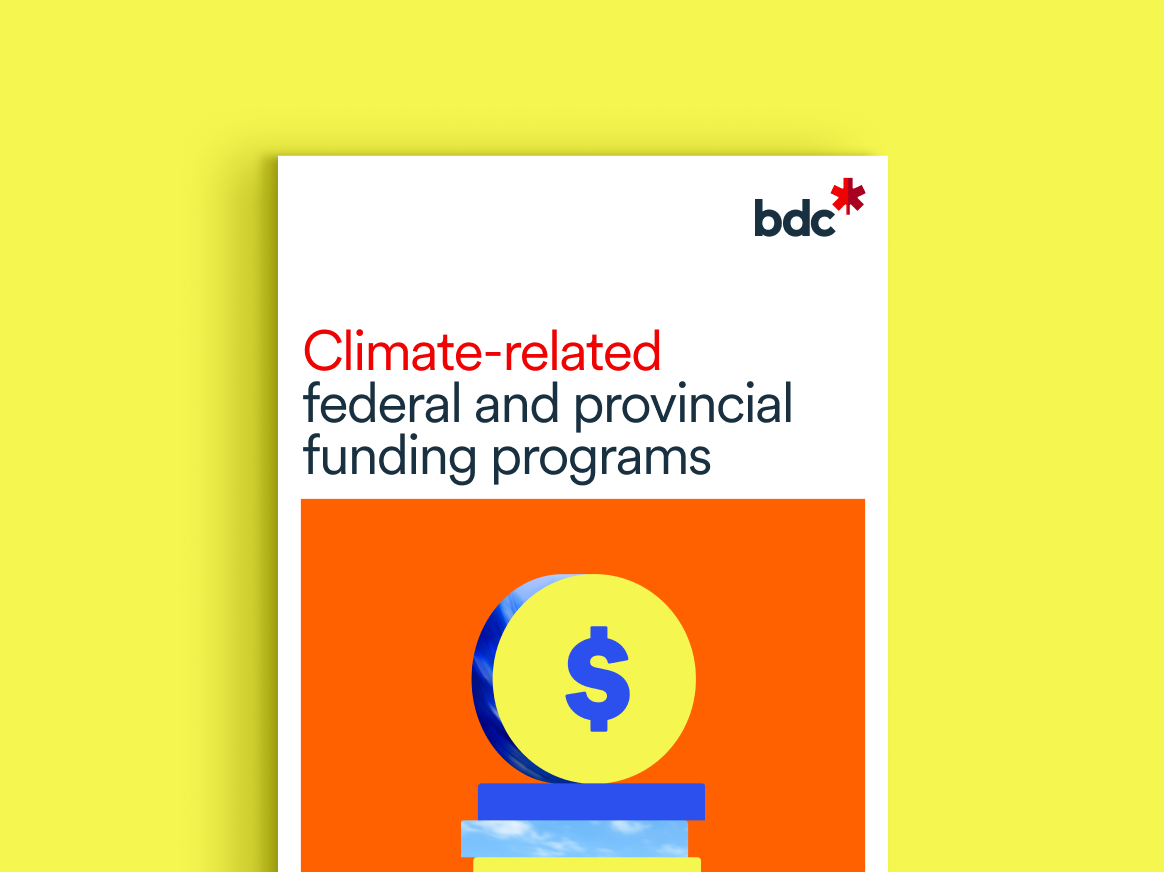Determine your business's climate impact
Your company’s carbon footprint is the total amount of greenhouse gases (GHGs) you emit into the atmosphere. Seven greenhouse gases covered by the Kyoto Protocol are typically measured, including carbon dioxide (CO2), methane and nitrous oxide. A company’s carbon footprint is measured in tonnes of carbon dioxide equivalent (CO2e). Calculating your emissions is not a prerequisite to action, but it can be very useful in guiding actions and monitoring progress.
On average, SMEs that calculated their GHG emissions took 11 months to recoup their investment.
Roadmap to calculating your GHG emissions
A carbon accounting standard is an internationally recognized method of calculating your company’s emissions. You’ll need to choose the one that best fits your company’s goals. The oldest and most commonly used method is the GHG Protocol Corporate Accounting and Reporting Standard. It divides emissions into three categories, also known as scopes.
Scope 1
Direct emissions from sources controlled or owned by your company, including from your energy consumption and company vehicles.
Scope 2
Indirect emissions from energy providers who supply you with electricity, steam, and/or heating and cooling for buildings.
Scope 3
All other indirect supply chain emissions, such as those from your raw material suppliers, waste and employee commuting.
-
Greenhouse Gas (GHG) Protocol
The GHG Protocol Corporate Accounting and Reporting Standard provides requirements and guidance for companies and other organizations that are preparing a corporate-level GHG emissions inventory.
Start collecting data on to calculate your company’s emissions. This involves going through all of your business activities and assets to determine what emissions each one produces. Follow these two steps:
1. Understand your goals
Examples of possible goals include cutting costs, reporting for eco-labelling or certification requirements, and reporting to regulators or partners (e.g. supply chains, financial institutions, insurance companies, investors).
2. Collect required data
This may include energy consumption by buildings, vehicle gas consumption and waste hauling weight reports. You can find this information on your invoices or by contacting your suppliers.
-
Government of Canada: Climate Change
Learn more about the Canadian government's climate actions.
Calculating your carbon footprint can be a complex process. It’s important to ensure your numbers are accurate. We recommend calculating your emissions annually. You can select how to do it from the following options.
Use your existing software
Some business management and accounting software systems offer modules that allow you to track your carbon footprint data and produce reports.
Hire an outside expert
Consultants can either complete most of the work for you or work with your team. This is a good option if you lack the resources to produce accurate emissions reports.
Calculate it yourself
You can use online tools to make a rough estimate of your emissions. For example, Natural Resources Canada offers its Greenhouse Gas Equivalencies Calculator. To do it yourself, you determine the CO2 equivalent based on what are called emissions factors. These are factors that affect the calculation in your area, such as the carbon intensity of your local electrical grid, types of energy used and modes of transportation.
-
Greenhouse Gas Equivalencies Calculator
The greenhouse gas equivalencies calculator can help you understand how your emissions data translate in concrete terms, such as the annual emissions from cars or households.
To report the data, you need to choose between two reporting approaches:
Financial and operational control approach
Under this approach, a business accounts for 100% of emissions from operations over which it has financial or operational control. For example, if a business directs the financial or operational policies of a restaurant, it reports 100% of the restaurant’s emissions. This is true regardless of what portion of the restaurant the business owns.
Equity share approach
This approach requires the company to account for emissions based on its share of equity in an operation. For example, if a business owns 40% of a restaurant, it reports 40% of the restaurant’s emissions.
Knowing how your business generates emissions helps you develop a reduction plan. Most emissions happen in four areas: electricity, heat and cooling, materials and transport.
Here are examples of projects to focus on:
Electricity
- Turn off and unplug appliances
- Run maintenance on old equipment and upgrade to more efficient models
Heating and cooling
- Set thermometers to lower heat during non-work hours
- Install air curtains and low-flow aerators on sinks
Materials
- Reduce the size of packaging
- Use recycled material
Transport
- Consolidate orders and shipments into one trip
- Switch to electric or more fuel-efficient company vehicles
-
Government of Canada: Net-Zero Challenge Technical Guide
Learn how to develop and finance an emissions reduction plan.
Recommended resources

Discover over 60 green governmental active grants, tax credits and loan programs.

Reducing your GHG emissions is a smart move for both your business and the planet. Discover the key areas in your business where you can take action now.

Use this free toolkit to estimate your footprint and identify where to take meaningful action.
Discover our solutions
The content of this webpage is provided for information purposes only, and the reader is responsible for any decisions resulting from its use. The results of applying the content are not guaranteed by BDC and may vary depending on the context, market, sector, financial situation and size of the company. Content originating from a source outside of BDC is the sole responsibility of the author of that source.




